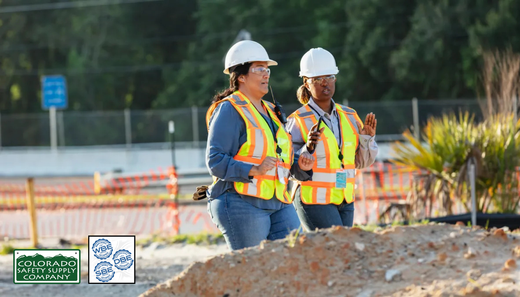Effective Date: January 13, 2025
In a significant update to workplace safety regulations, the Occupational Safety and Health Administration (OSHA) has finalized a revision to its personal protective equipment (PPE) standard for the construction industry. The updated rule mandates that employers must provide properly fitting PPE to all workers, addressing a long-standing concern regarding safety and comfort on job sites.
Goals of the Updated Rule
The proposed rule aims to:
- Improve protections from hazardous conditions
- Ensure that construction workers of all sizes and genders are fitted properly
- Align the construction industry standard with the standard for general industry
The Department of Labor officially announced the change on December 11, 2024.
The proposed rule clarifies an existing requirement and is not expected to increase employers' costs or compliance burdens. Comments and hearing requests were due by September 18, 2023.
OSHA Standards for PPE
OSHA has other standards for PPE, including 1910.132, which covers general requirements:
- Provision and maintenance: Employers must provide, use, and maintain PPE appropriately.
- Employee-owned PPE: Employers must ensure it is adequate.
- Hazard assessments: Employers must assess workplaces for hazards requiring PPE.
- Defective PPE: Employers must not use defective or damaged PPE.
- Employer payment: Employers are required to pay for PPE, with few exceptions.
Additional requirements include:
- Welding shields: Must have filter lenses with appropriate shades to protect against specific hazards.
- Foot protection: Protective footwear purchased after July 5, 1994, must meet ANSI Z41-1991 standards.
What the New Rule Requires
The updated standard, effective January 13, 2025, adds specific language requiring construction employers to ensure PPE fits appropriately for each worker. This aligns the construction industry’s PPE requirements with those already established for general industry. The rule applies to a wide range of PPE, including:
- Hard hats
- Gloves
- Safety glasses
- Hearing protection
- Respirators
- Coveralls
- Vests
- Harnesses
OSHA initially proposed this change in July 2023, responding to growing concerns about the dangers posed by improperly fitting protective gear.
Why Properly Fitting PPE Matters
Ill-fitting PPE not only undermines worker safety but introduces new hazards. For instance:
- Oversized gloves or vests may get caught in machinery.
- Poorly fitting harnesses can fail to provide adequate fall protection.
- Uncomfortable equipment discourages consistent use, increasing injury risks.
Women and workers with nonstandard body sizes face additional challenges. Doug Parker, Assistant Secretary for Occupational Safety and Health, emphasized:
“I’ve talked to workers in construction, particularly women, who have spoken of personal protective equipment that didn’t fit or was simply unavailable at the jobsite in their size.”
Research supports these claims. Jessica Bunting of CPWR noted that 77% of surveyed tradeswomen reported hazards due to ill-fitting PPE. This issue extends beyond gender, affecting men with nonstandard sizes as well.
Industry Progress
Fortunately, PPE manufacturers have started addressing these concerns by:
- Expanding size ranges
- Developing gear specifically tailored to women and workers of varying shapes and sizes
These advancements mark a positive step toward creating safer and more inclusive job sites across the construction industry.
Looking Ahead
The updated OSHA rule represents a critical move toward improving workplace safety for all construction workers. By requiring employers to provide properly fitting PPE, the industry can:
- Better protect its workforce
- Reduce unnecessary hazards
- Promote a culture of safety and inclusivity
Construction employers should begin reviewing their PPE policies and inventory to ensure compliance with the new standard by January 13, 2025. Workers are encouraged to communicate any concerns about their PPE to supervisors to ensure their safety needs are met.
Explore PPE solutions tailored for women in construction on our website: Shop Women’s PPE. For further information, visit the OSHA announcement or Federal Register.















